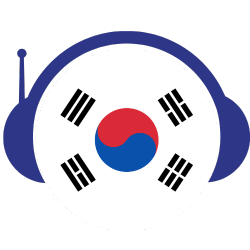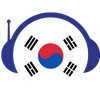"South Korea Conducts Major Air Defense Drill Amid Rising Tensions, But Public Response Muted"
South Korea rang with the echoing sounds of sirens on a warm, rain-drenched afternoon as the nation executed its foremost air defense rehearsal in over half a decade, prompted by escalating concerns over North Korea's bolstered nuclear and missile capabilities. Interestingly, the resounding alarms seemed to fall on deaf ears as numerous citizens remained undeterred, continuing their daily routines.
This revamped drill is a component of the annual Ulchi civil defense program and runs concurrently with the Ulchi Freedom Shield maneuvers, a collaborative initiative between South Korean and U.S. military forces. This year's drills aim to fine-tune the nation's readiness against potential North Korean offensives or other unexpected crises.
As the clock struck 2 p.m. in Seoul's bustling city center, public figures donned in yellow outerwear, adorned with "Civil Defence" insignia, took to the streets, urging the public to stay safe and move to sheltered areas. Their advice, however, largely went unnoticed as many continued with their activities, showing indifference to the shelter-seeking suggestions.
One local, Na Eun, a seasoned architectural enthusiast, admitted her unawareness of the drill, commenting, "It seems like the general mood is apathetic towards these drills. Personally, I remain skeptical about the possibility of an actual war breakout."
Park Joo-ui, a respected community spokesperson from Jongno district in Seoul, expressed his bewilderment at the public's apparent disinterest. "It's baffling that during crucial times like these, there seems to be a lack of community support. How can we adequately prep for unforeseen circumstances with such an attitude?" the senior leader pondered.
As the drill unfolded, motorists in numerous locations were advised to park their vehicles on the road's edge. Meanwhile, various public establishments like shopping centers and cinemas witnessed organized evacuations under the guidance of the interior ministry.
In one prominent Seoul building, office personnel congregated in the subterranean parking area, with many showing varied reactions. One banking professional remarked on the effectiveness of these shelters, stating, "While it's debatable how protective these spaces would be against actual bombings, it's still worthwhile to be familiarized with them through such drills."
While this was ongoing, medical centers and public transport services remained unaffected.
South Korea's President, Yoon Suk Yeol, made a notable visit to the Command Post Tango, a fortified facility for the combined U.S.-South Korea forces. He emphasized the integral role of these joint drills in neutralizing North Korean threats.
In certain areas closer to the North Korean boundary, residents underwent enhanced drill experiences, encompassing chemical, biological, and radiological drills, which involved utilizing gas masks and accessing emergency sustenance.
Historically, the Ulchi civil defense drills trace back to 1969, following an audacious intrusion by North Korean forces into Seoul's presidential premises. The country boasts roughly 17,000 shelters, accommodating its 52 million residents. However, the specific air defense drill was last witnessed in 2017.
Earlier this year, there was a momentary state of chaos when an erroneous air raid alert was inadvertently released post North Korea's unsuccessful satellite launch attempt, despite Seoul being nowhere near the rocket's path.

